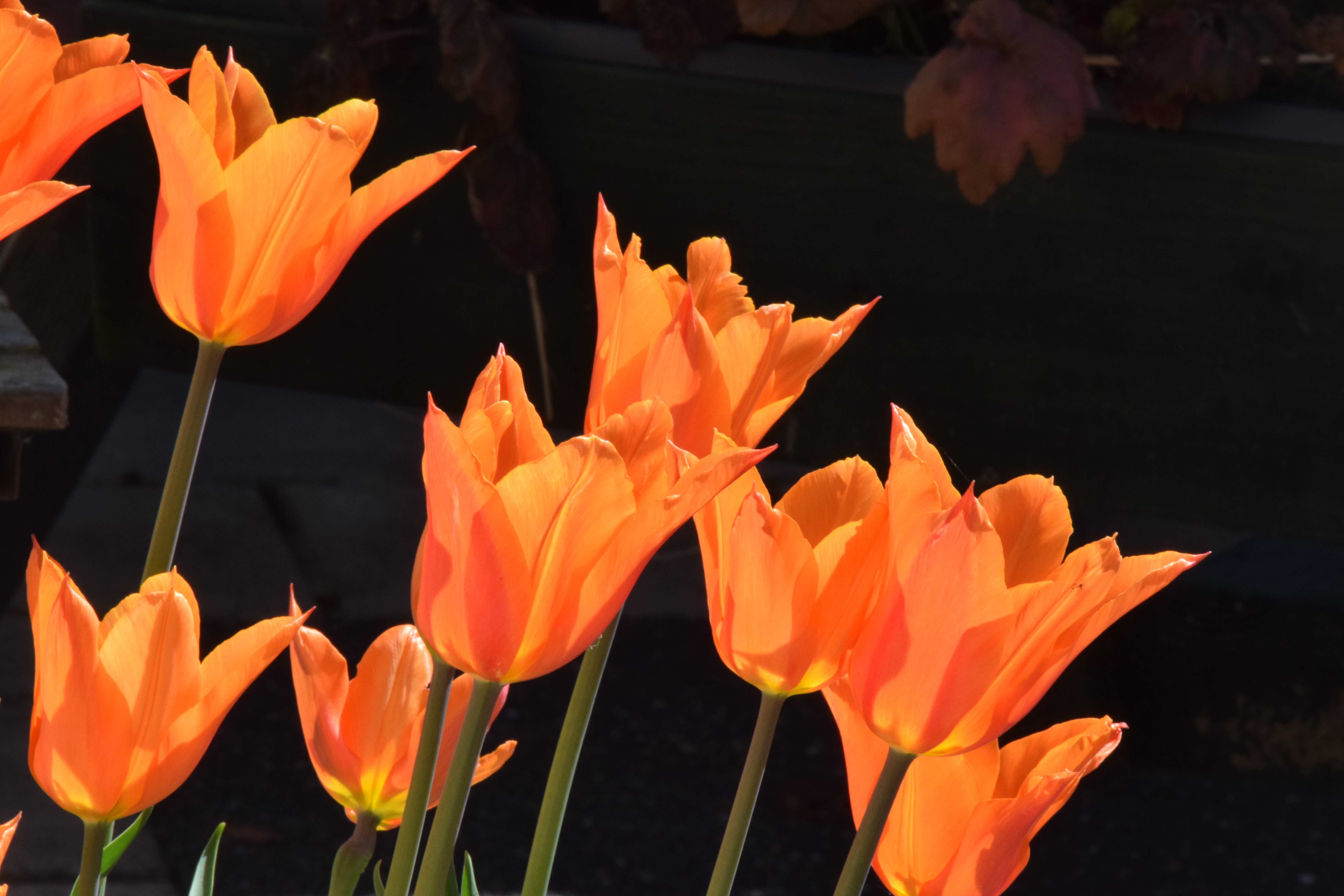
Tulips are something of a luxury but, dare I say it, an essential one. I always think I am being extravagant when I buy the rich brown bulbs in autumn and then, when I am enjoying their dazzling blooms in spring, I wish I had not been so mean and wish I had planted more.
It is unfortunate that, unlike daffodils, which are ideally suited to our climate and can be planted and left to establish, tulips are not so simple. In part this is because they prefer a drier, warmer climate than ours (though perhaps that is changing) and that the bulbs split, after flowering and do not always make bulbs of flowering size. The result is a mass of leaves and no flowers.
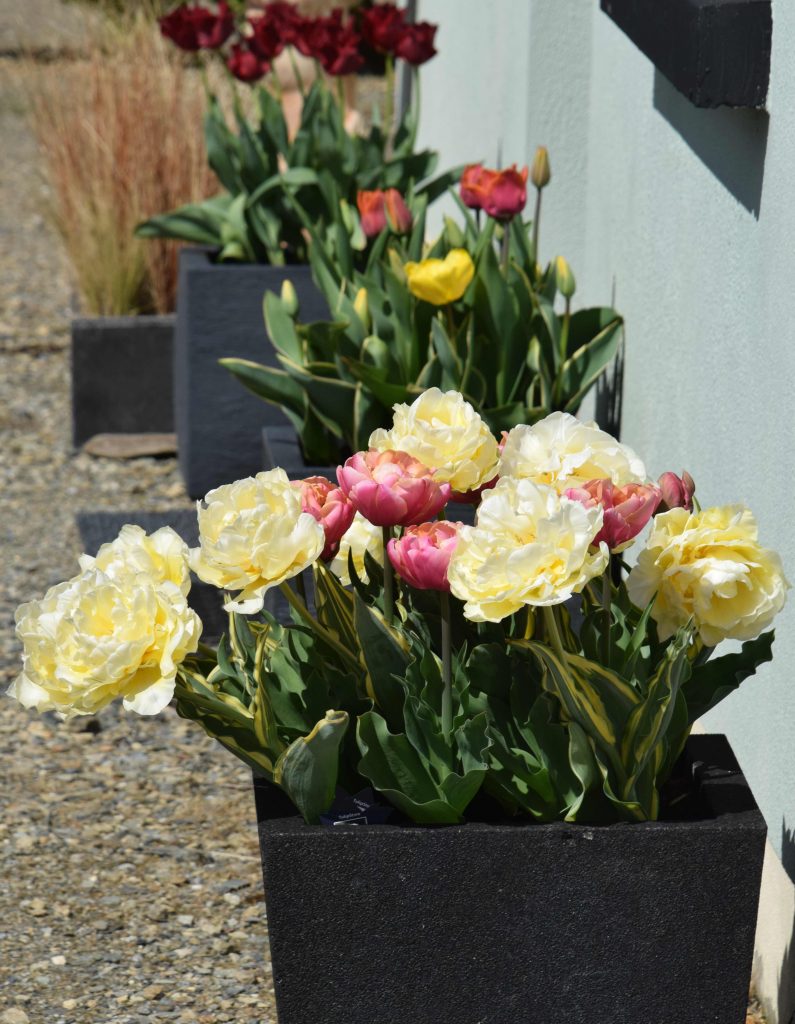
For this reason I tend to plant my new tulips in pots. I can then enjoy them near the house or in special places. When I lift and dry them I keep the largest bulbs and I plant these in flower beds and borders or, if they have done very well, I might use them in pots again. This way I get at least two years from my tulips. But to give the them a chance I make sure I feed them when in growth and allow them to dry off naturally so they can make new bulbs.
Pots of tulips are not just put around the house. I also plant pots that sit (on bricks or paving, for drainage) in borders to provide extra, early colour. This lifts the flowers and give them more impact.
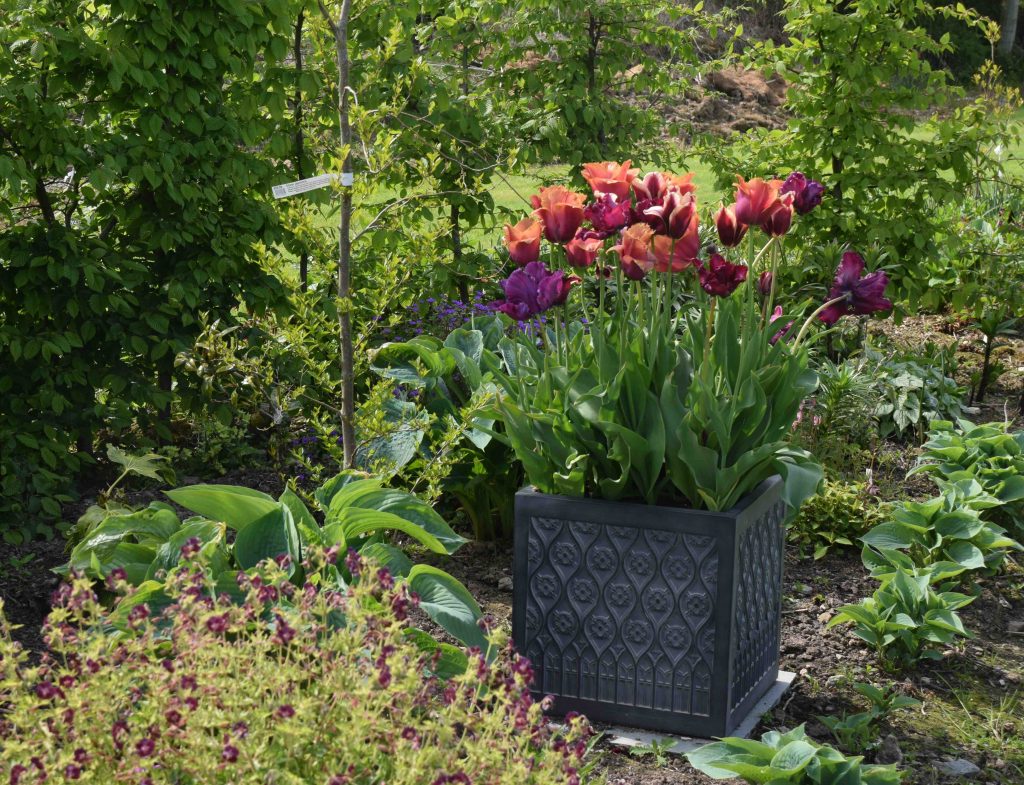
You may be a bit dazzled by the selection when you visit Nags Hall but the choice will probably come down to colour and price. I am never certain if I like all the flouncy pastel doubles and Parrot tulips most or the simpler, primary colours. This spring I had mostly clever combinations of pink and cream and orange and purple, as you can see. But I craved the pop of vibrant red that tulips do so well. So if you are uncertain of which to buy I wold steer you towards ‘Red Riding Hood’ as a first choice.
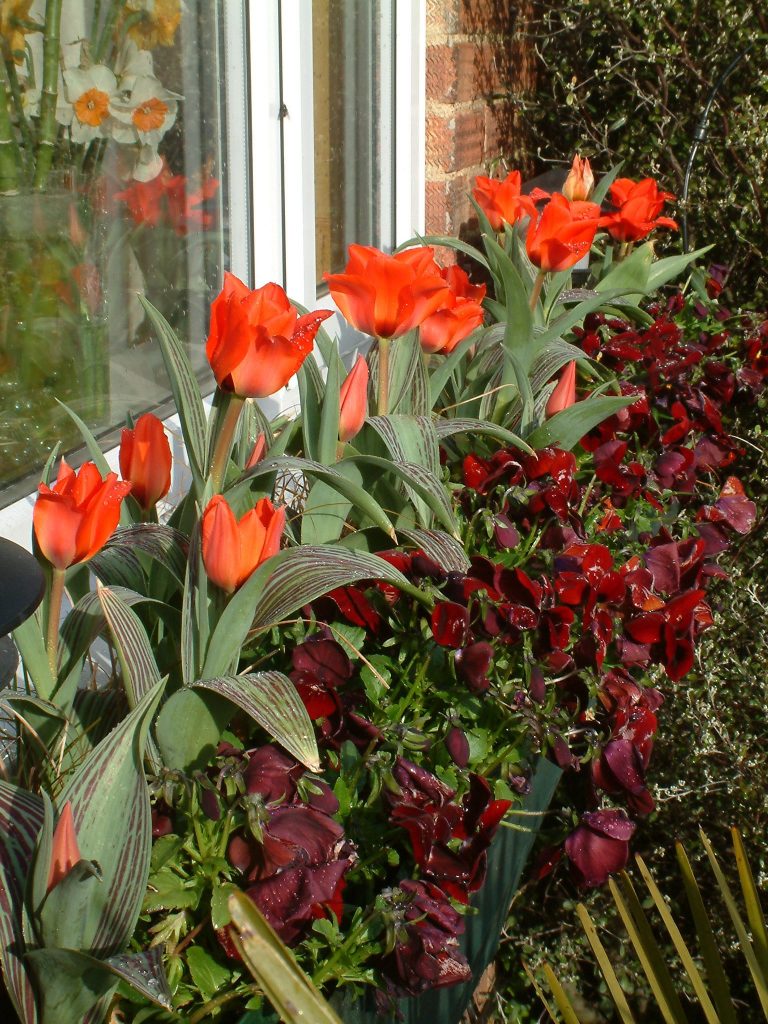
This is a Greigii tulips which means it flowers in April and the foliage is attractively striped with purple. It looks good as soon as the leaves unfurl. The flowers are bright red and cope with spring weather well. It is a strong grower and the bulbs are usually good to use a second year. Because it is so easy to grow it is usually one of the least expensive tulips to buy. There is a variegated form of this called ‘Fire of Love’ and that is a real stunner.
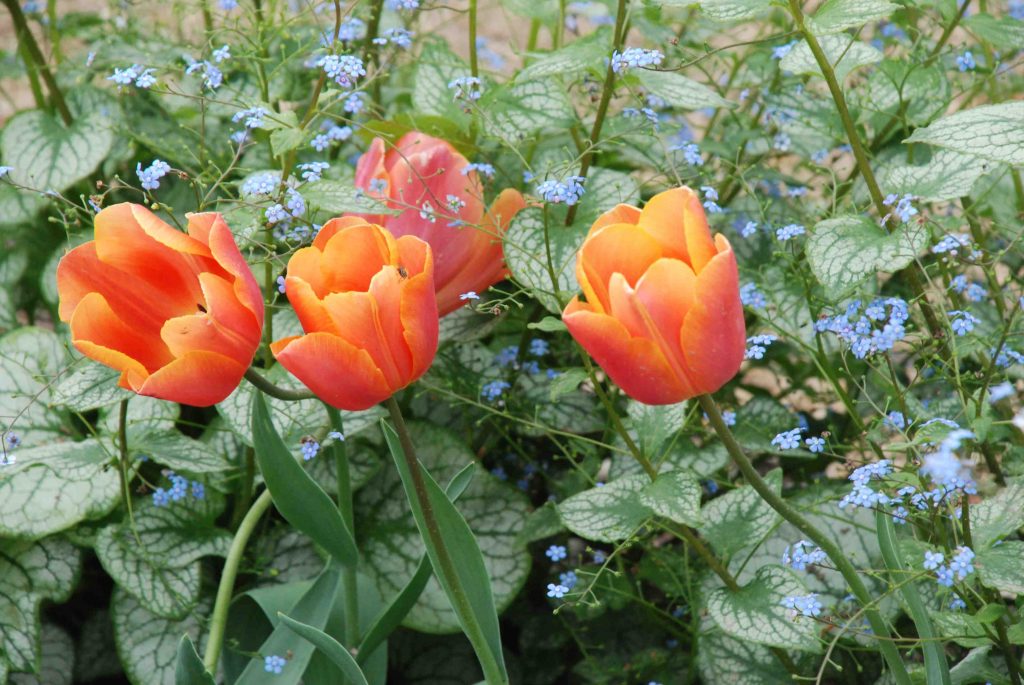
Tulips can be planted in borders too, of course’. The problem of the old, withering foliage can be coped with by planting them through and beside herbaceous plants like the brunnera (above).
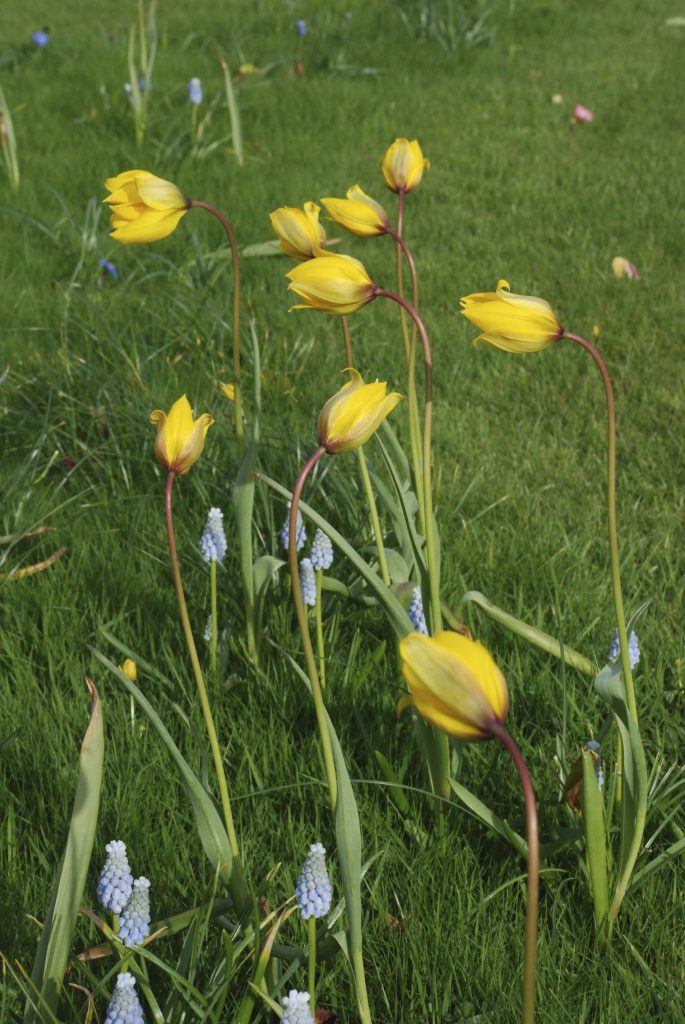
Tulips are not usually considered for naturalising in grass but the elegant and fragrant Tulips sylvestris usually does well as if the lawn is not too wet and as long as the foliage is allowed to develop after flowering. It will grow in borders too and is a delightful plant.
Weekly tips
Remove shading from greenhouse glass and clean out the greenhouse so it is clean and free from debris for winter
Pick apples, as they start to ripen, and store in cardboard boxes in a shed to ripen
Put netting across ponds before leaves start to fall into the water
Remove dead leaves from tomato plants and pull up plants if they have finished cropping
Sow salad crops in pots of multipurpose compost for winter crops